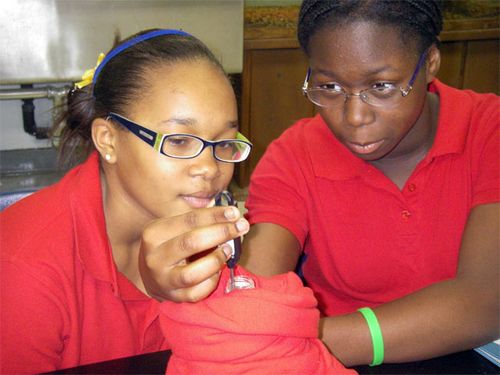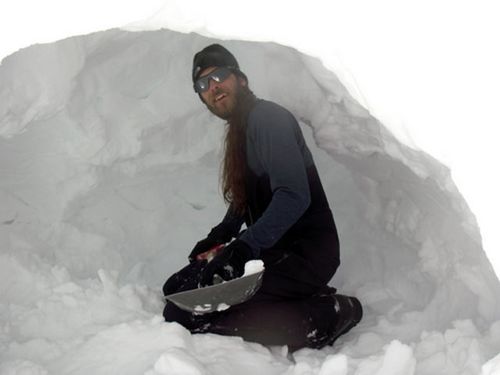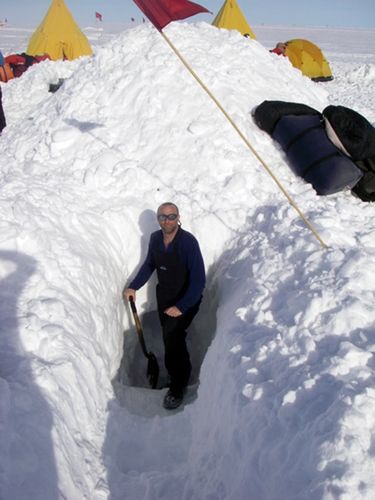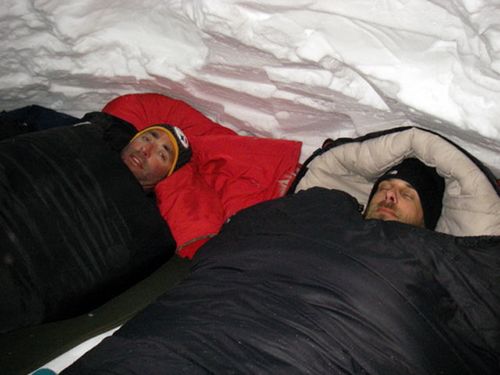Did you read the teaser?
Are you as confused as I was the first time I heard this?
I have been learning more about computers and computing than I ever would have thought I would here in Antarctica thanks to members of my team. Of my team members Keith Lehigh and Chad Brown are from IU, Indiana University in Indianapolis. They are computer systems analysts with Polar Grid.
Polar Grid is the computing hardware and software that is here with us in Antarctica but also is the computing clusters that are located at Indiana University (IU) and at Elizabeth City State University (ECSU) in North Carolina. Polar Grid, which is funded by a grant from the National Science Foundation (NSF), helps the team improve the quality of the data we are collecting here in the field and to reduce the time that scientists wait to be able to process the data collected for their use in scientific discovery.
Imagine that you are in your science classroom working on an experiment with a team that requires someone from your group to go outside to take temperatures from 15 places around the school yard.
 Tyler and Ayo working hard on this lab.
Tyler and Ayo working hard on this lab.
Your team has everything in place and is ready for the data so you can see if your hypothesis is valid. You send a member into the field where they collect the data, but they will not return for 3 months. Hey, it's a big school yard. Your team is stuck waiting for data. You can't move forward with your work until you get that data. This would be a major problem!!
There are scientists around the world waiting for the data that will be collected while my team is here in Antarctica. Keith and Chad are here working to verify the quality of the data collected and to insure the speed at which it can be processed here in the field and by clusters, which are the high performing computing systems at IU and ECSU, back in the states.
To give you an idea of how much data is going to be collected here is a little lesson that explains the teaser.
Any letter on your keyboard is a byte of information.
1. How many bytes would be in the word "Antarctica"? See answer at the bottom of this journal entry.
When my team is collecting data from the radar developed by The Center for Remote Sensing of Ice Sheets (CReSIS) they will be collecting 100 megabytes of data per second for 4 hours at a time.
** Now for the math** 2. How many bytes of information will that be? (clue look at the teaser of this journal)
If you said the letter "A" once every second how long would it take you to say "A" the same number of times as the answer to question number #2 (clue: We know that one letter like the letter "A" is one Byte.)
How old would a person be if they are 12 ½ years old when they begin? ( We are going to assume that they take no breaks to eat, sleep or do anything but say the letter "A")
While you are calculating here are a couple of pictures of Chad and Keith. No cheating...they'll be watching.
 Keith, away from his computer, is carving out the interior of the quimzhee.
Keith, away from his computer, is carving out the interior of the quimzhee.
 Chad is hard at work away from his computers building a tunnel into the quimzhee.
Chad is hard at work away from his computers building a tunnel into the quimzhee.
 We're watching you...Get to work on that math!! We had to work hard to get Mr. W to understand all of this.
We're watching you...Get to work on that math!! We had to work hard to get Mr. W to understand all of this.
Answers: 1. There are10 Bytes of information in the word "Antarctica". 2. 4 hours of flying times 60 minutes/hour times 60 sec/min equals 14,400 seconds per flight The team collects 100 Megabytes per second so that equal 1,440,000 Megabytes of information per 4 hour flight. There are 1,000,000 Bytes in 1 Megabyte. So in one 4 hour flight we will collect 1,440,000,000,000 bytes of information. 3. A day has 86,400 seconds, so to say the letter "A" every second 1,440,000,000,000 times it would take you 16,666 days which is 45.5 years. 4. So if you are 12 ½ years old today and begin saying the letter "A" right now you will be able to stop when you are 58 years old.
SOOO you better get started, Trekkers! Mr. W

